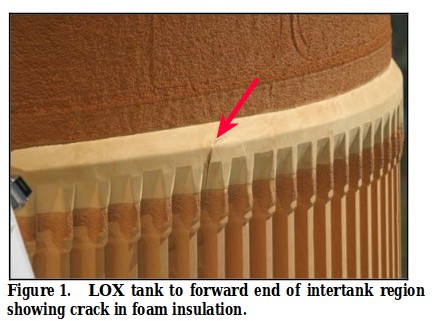That's the intertank - the cylinder that connected the bottom of the LO2 tank to the top of the LH2 tank.
![enter link description here]]1
It didn't contain propellant, but did contain the forward interface with the Solid Rocket Boosters, and was built for lightness and strength, with skin-stringer construction. The ribs you see were the stringers.
The intertank is a steel / aluminum semimonocoque cylindrical structure with flanges on each end for joining the liquid oxygen and liquid hydrogen tanks. The intertank houses ET instrumentation components and provides an umbilical plate that interfaces with the ground facility arm for purge gas supply, hazardous gas detection and hydrogen gas boiloff during ground operations. It consists of mechanically joined skin, stringers and machined panels of aluminum alloy. The intertank is vented during flight. The intertank contains the forward SRB-ET attach thrust beam and fittings that distribute the SRB loads to the liquid oxygen and liquid hydrogen tanks. The intertank is 270 inches long, 331 inches in diameter and weighs 12,100 pounds.
This shows how the three sections fit together:
![enter link description here]]2
During the launch campaign for STS-133, some of these stringers caused a launch scrub - they were made from substandard material and cracked.
Sources

